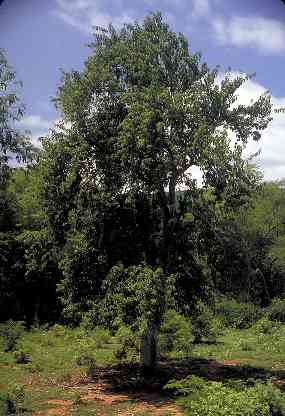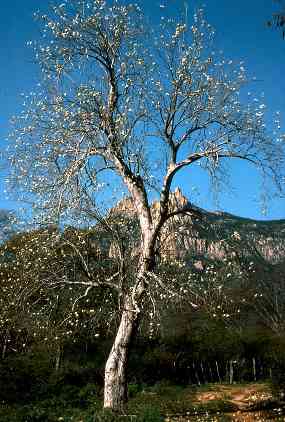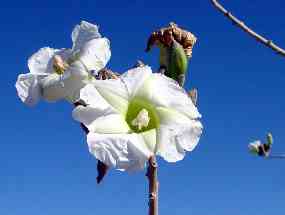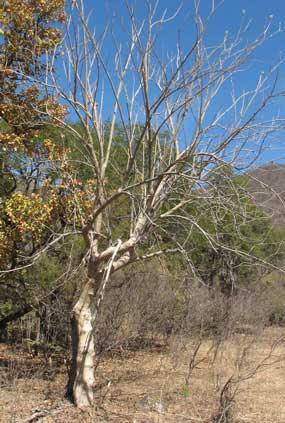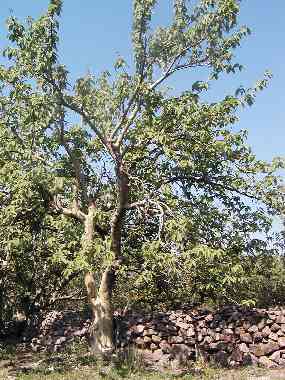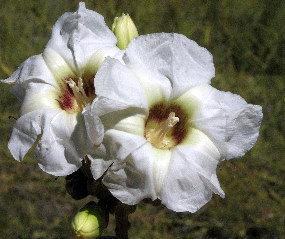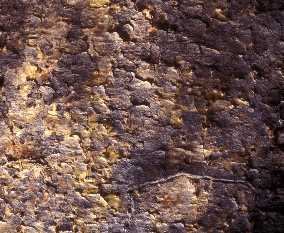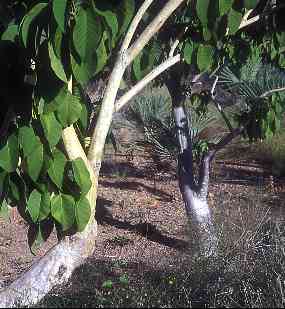Research and Conservation in Southern Sonora, Mexico
Ipomoea arborescens (Humb. & Bonpl. ex Willd.) G. Don var. arborescens
(palo santo, palo blanco, tree morning glory)
Tree morning glory is a common species in the tropical forests of southern Sonora. It ranges from northern Sonora southward into Michoacán and Morelos. The fast-growing plants (2-3 meters/year) produce soft semisucculent stems. They are in leaf only during the brief summer rainy season. Foliage is shed soon after the rain stops in September, and flowering occurs from November to March.
Ipomoea arborescens var. pachylutea Gentry
(palo santo amarillo)
This variety occurs at higher elevations than var. arborescens, at the transition between tropical deciduous forest and oak woodland. It differs from the nominate variety in having a yellowish bark and harder wood, much larger and hairier leaves, and dark purple flower throats.
The flowers of tree morning glories are major nectar sources for lesser long-nosed bats, hummingbirds, and probably bees. Deer feed on the abundant fallen flowers.
Reference
Austin, Daniel F., Richard S. Felger, & Thomas R. Van Devender. 2005. Nomenclature of Ipomoea arborescens (Convolvulaceae) in Sonora, Mexico. Sida 21(3)1283-1292.








